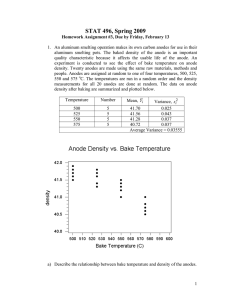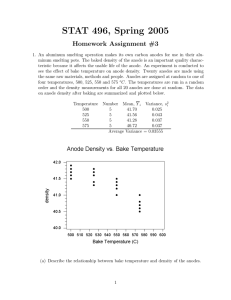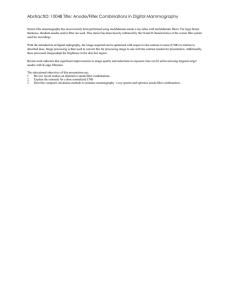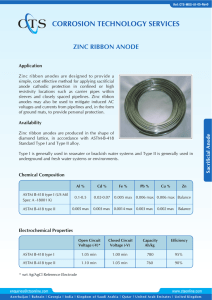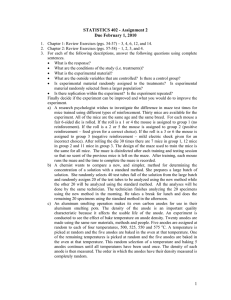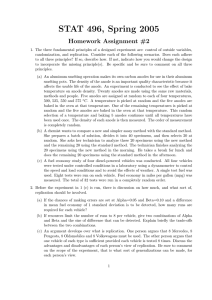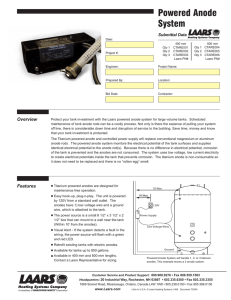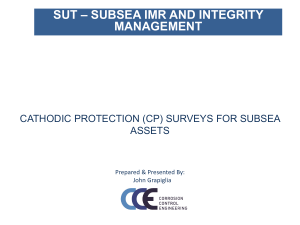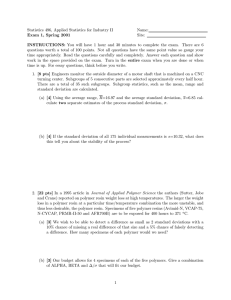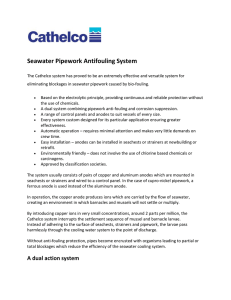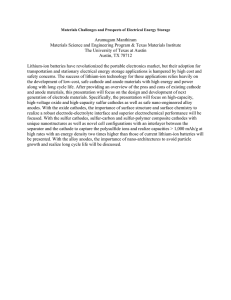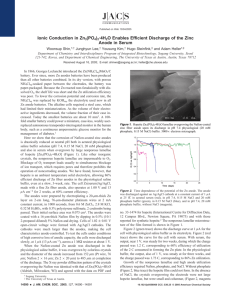STAT 402B
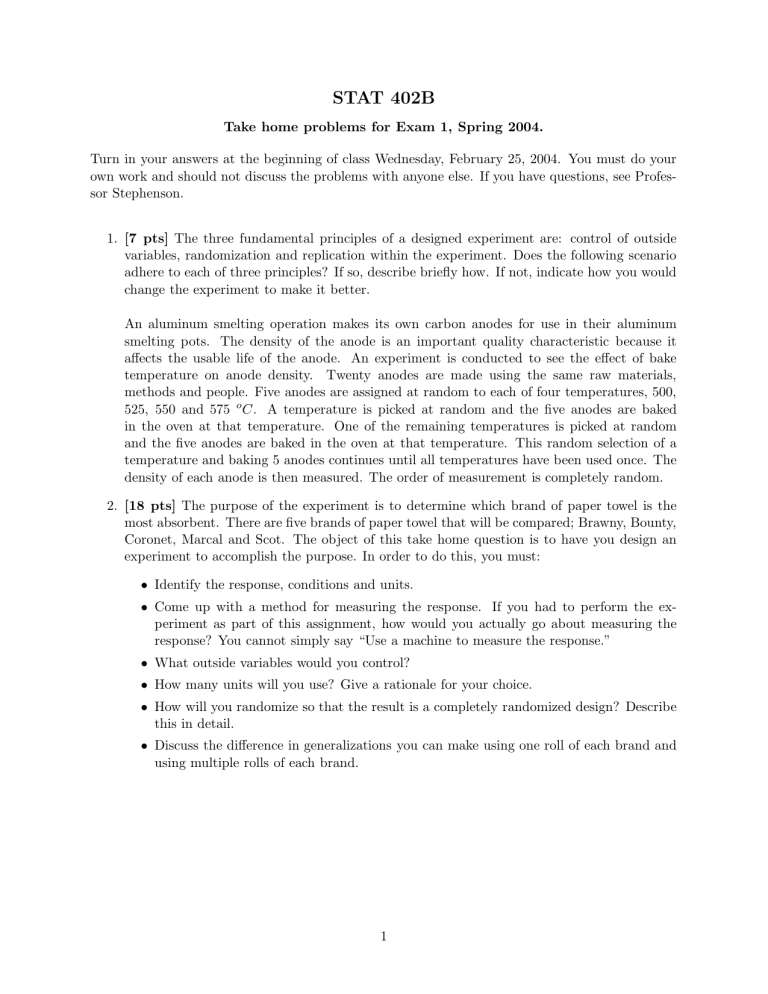
STAT 402B
Take home problems for Exam 1, Spring 2004.
Turn in your answers at the beginning of class Wednesday, February 25, 2004. You must do your own work and should not discuss the problems with anyone else. If you have questions, see Professor Stephenson.
1.
[7 pts] The three fundamental principles of a designed experiment are: control of outside variables, randomization and replication within the experiment. Does the following scenario adhere to each of three principles? If so, describe briefly how. If not, indicate how you would change the experiment to make it better.
An aluminum smelting operation makes its own carbon anodes for use in their aluminum smelting pots. The density of the anode is an important quality characteristic because it affects the usable life of the anode. An experiment is conducted to see the effect of bake temperature on anode density.
Twenty anodes are made using the same raw materials, methods and people. Five anodes are assigned at random to each of four temperatures, 500,
525, 550 and 575 o C . A temperature is picked at random and the five anodes are baked in the oven at that temperature. One of the remaining temperatures is picked at random and the five anodes are baked in the oven at that temperature. This random selection of a temperature and baking 5 anodes continues until all temperatures have been used once. The density of each anode is then measured. The order of measurement is completely random.
2.
[18 pts] The purpose of the experiment is to determine which brand of paper towel is the most absorbent. There are five brands of paper towel that will be compared; Brawny, Bounty,
Coronet, Marcal and Scot. The object of this take home question is to have you design an experiment to accomplish the purpose. In order to do this, you must:
•
Identify the response, conditions and units.
•
Come up with a method for measuring the response. If you had to perform the experiment as part of this assignment, how would you actually go about measuring the response? You cannot simply say “Use a machine to measure the response.”
•
What outside variables would you control?
•
How many units will you use? Give a rationale for your choice.
•
How will you randomize so that the result is a completely randomized design? Describe this in detail.
•
Discuss the difference in generalizations you can make using one roll of each brand and using multiple rolls of each brand.
1
